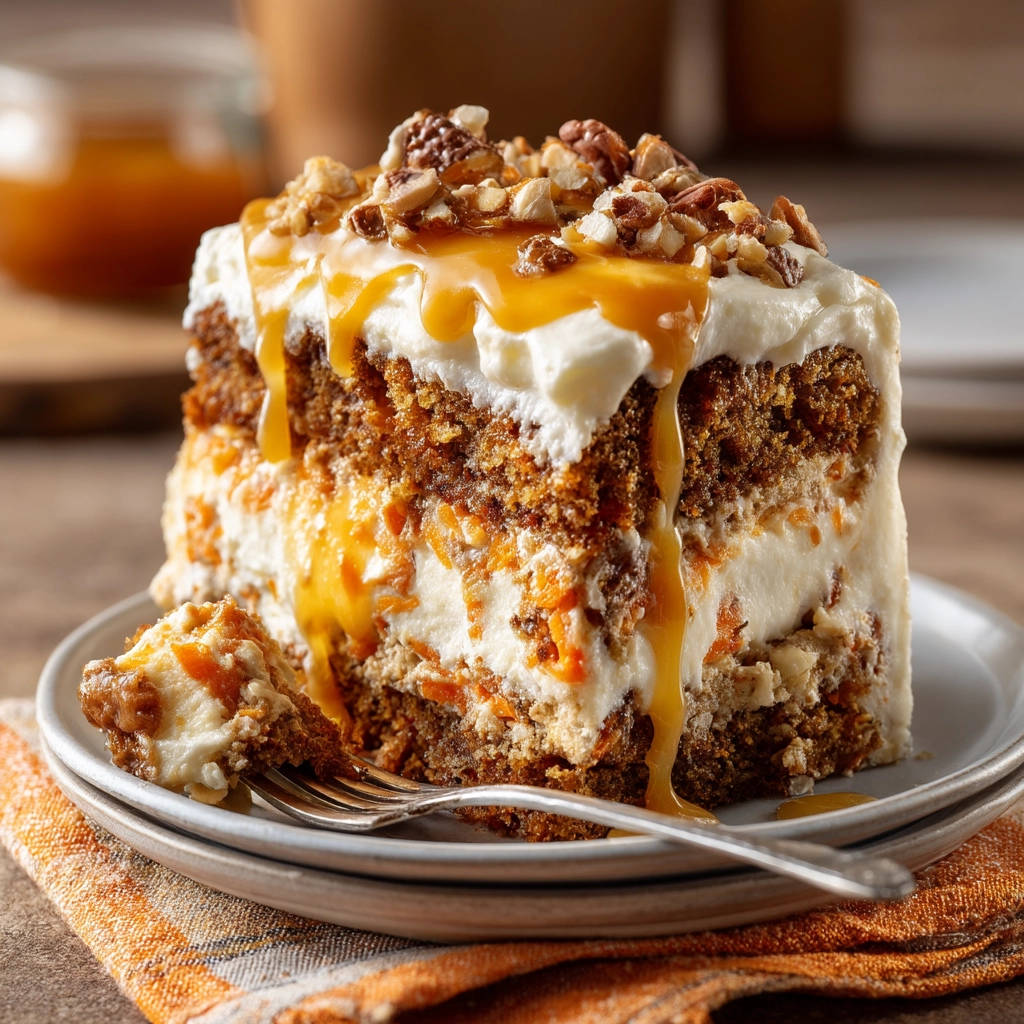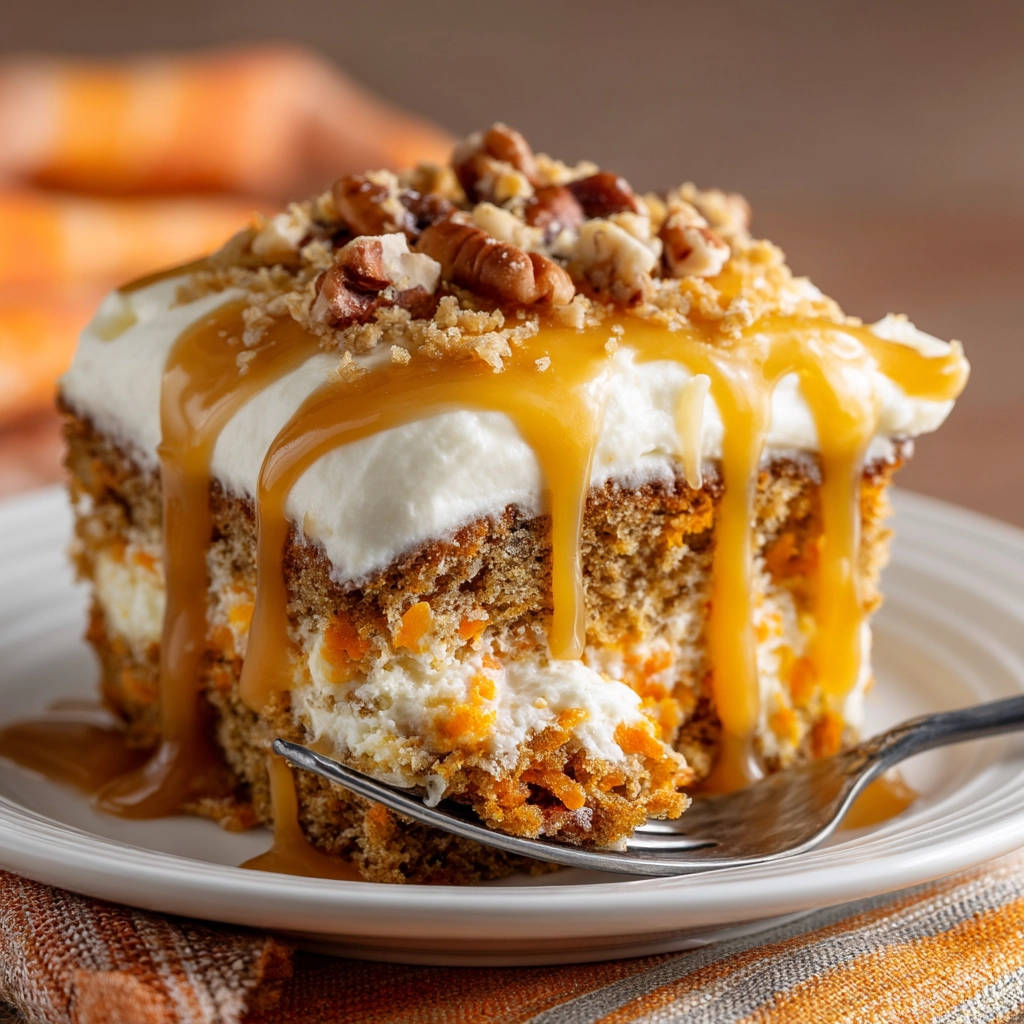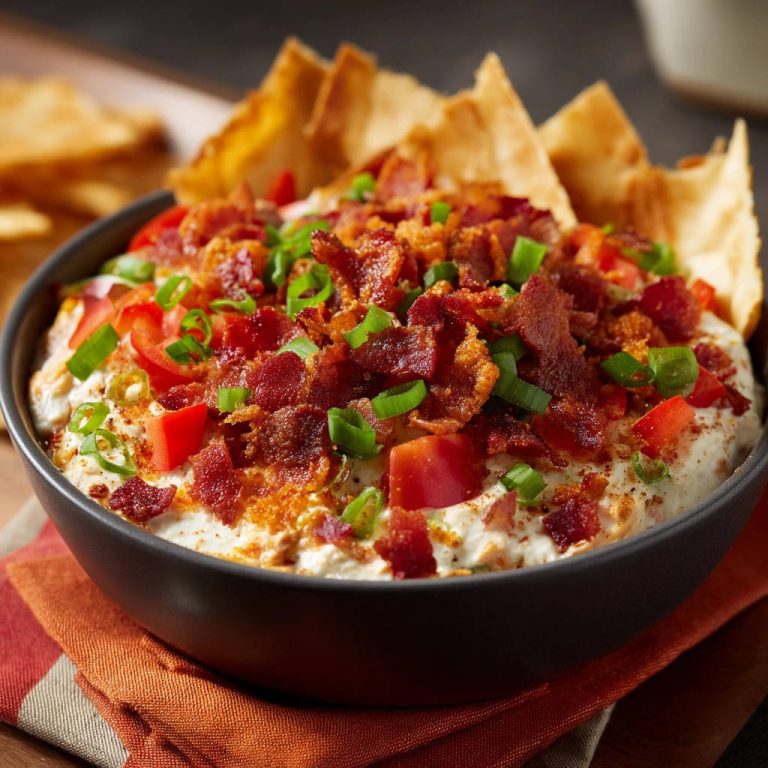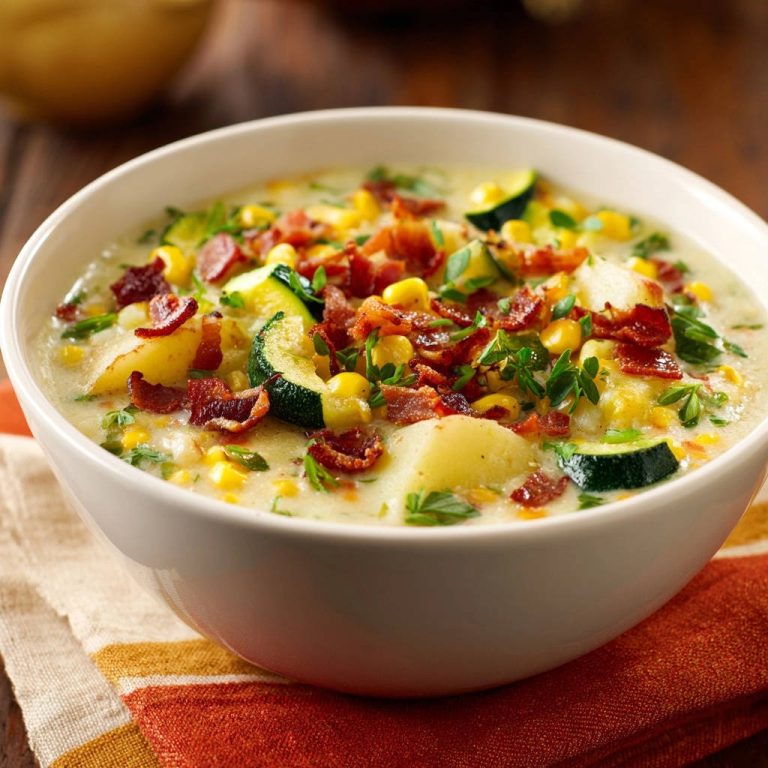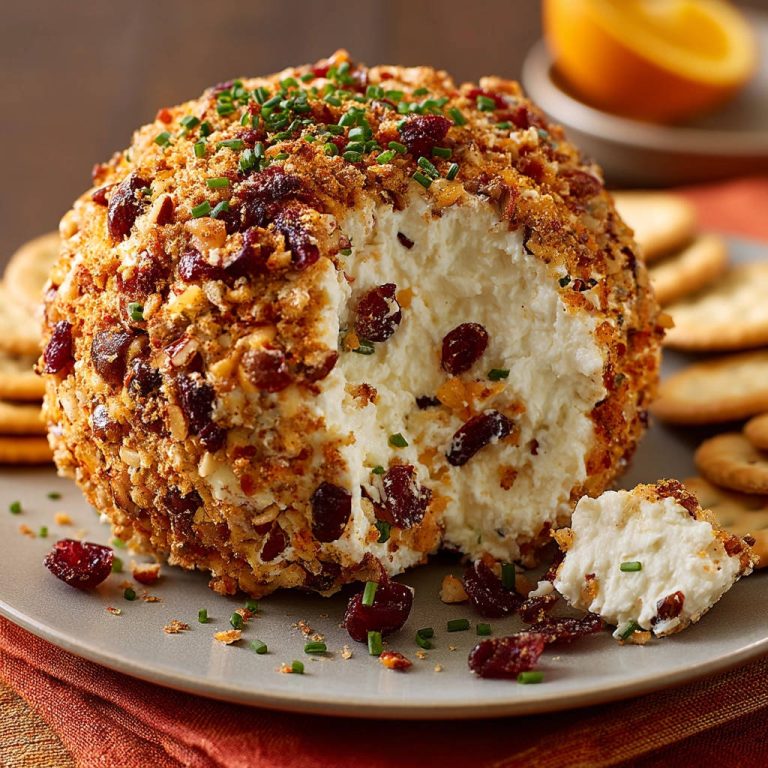Have you ever baked a carrot cake, only to slice into it later and find it disappointingly dry and crumbly? It’s a heartbreak many home bakers have experienced (myself included!). For years, I tinkered and tested, facing one parched cake after another.
But after countless experiments, I finally unlocked the secret weapon to achieving a consistently moist, tender, and incredibly flavorful classic carrot cake. This isn’t just a carrot cake recipe; it’s the one that delivers that perfect, springy texture and rich spice blend every single time.
Paired with a tangy, smooth cream cheese frosting and an optional, luscious caramel drizzle, this classic carrot cake is destined to become your go-to recipe for birthdays, holidays, or just because you deserve a truly magnificent slice of cake.
Why You’ll Love This Classic Carrot Cake
Forget everything you thought you knew about dry, dull carrot cakes. This recipe is a game-changer for several delicious reasons:
- Unmatched Moisture: Thanks to one simple, crucial ingredient choice and technique, this cake stays incredibly moist for days.
- Rich Spice Blend: A perfect harmony of warm spices like cinnamon and nutmeg brings that signature carrot cake flavor to life.
- Tender Crumb: The method ensures a light and tender cake crumb that practically melts in your mouth.
- Perfect Cream Cheese Frosting: Tangy, sweet, and ultra-creamy – the ideal partner for the spiced cake layers.
- Optional Caramel Drizzle: Elevate your cake with an easy homemade caramel sauce that adds an extra layer of decadence.
- Reliable Results: Once you make this cake, you’ll have a foolproof recipe you can trust for any occasion.
Gathering Your Ingredients for Guaranteed Moist Carrot Cake
Creating this beautifully moist and flavorful carrot cake starts with understanding the role each ingredient plays. It’s not just about throwing things in a bowl; it’s about the right components working together to build that perfect texture and taste.
For the cake layers, we’re using a blend of pantry staples and fresh additions. The combination of flours, sugars, leaveners, and spices creates the foundation, while eggs, oil, vanilla, and of course, the carrots, bring moisture and richness.
- All-Purpose Flour: Provides the necessary structure for the cake layers. Measuring correctly is key – spoon and level rather than scooping directly from the bag to avoid a dense cake. You’ll need 2 cups.
- Granulated Sugar & Brown Sugar: Granulated sugar provides sweetness and helps tenderize, while packed brown sugar is a moisture MVP! The molasses in brown sugar not only adds a subtle caramel-like flavor but also contributes significantly to keeping the cake moist. We’ll use 1.5 cups of granulated sugar and 0.5 cup (packed) of brown sugar.
- Baking Soda & Salt: Baking soda is our primary leavener, reacting with ingredients like brown sugar to give the cake lift and a tender crumb. Salt balances the sweetness and enhances all the flavors. You need 2 teaspoons of baking soda and 1 teaspoon of salt.
- Warm Spices: The heart of carrot cake flavor! Ground cinnamon (2 teaspoons), ground nutmeg (0.5 teaspoon), and optional ground ginger (0.25 teaspoon) create that comforting, aromatic profile. Ensure your spices are fresh for the best flavor.
- Large Eggs: Eggs provide structure, richness, and help bind the ingredients together. Four large eggs are needed, ideally at room temperature for better emulsification.
- Vegetable Oil (or other neutral oil): THIS is the simple trick mentioned earlier for guaranteed moisture. Using 1.5 cups of oil instead of melted butter is crucial because oil remains liquid at room temperature, keeping the cake exceptionally moist over time compared to butter, which solidifies. Any neutral-flavored oil like canola or sunflower oil works well.
- Vanilla Extract: Enhances the sweetness and spice flavors. 2 teaspoons of good quality vanilla extract make a difference.
- Shredded Carrots: The star ingredient! You’ll need 3 cups, which is typically about 4-5 medium carrots. Shredding them fresh is important; pre-shredded carrots can be drier and harder. The moisture released from fresh carrots during baking contributes to the cake’s tenderness.
- Chopped Nuts (Walnuts or Pecans, Optional): Add fantastic texture and a nutty flavor that complements the spices. Walnuts or pecans are traditional choices. You’ll need 1 cup if using.
And no carrot cake is complete without its signature topping! Here’s what you’ll need for the classic Cream Cheese Frosting:
- Cream Cheese: The essential tangy base. Use 8 ounces, softened to room temperature for a smooth frosting. Full-fat cream cheese yields the best results.
- Unsalted Butter: Provides richness and structure to the frosting. You’ll need 0.5 cup (1 stick), also softened.
- Powdered Sugar: Sweetens the frosting and gives it body. You’ll use 3-4 cups, depending on your desired sweetness and consistency. Sifting can help prevent lumps.
- Vanilla Extract: Complements the cream cheese and butter flavors. 1 teaspoon is perfect.
- Pinch of Salt: Balances the sweetness of the powdered sugar.
For an extra touch of indulgence, we have an optional, but highly recommended, Caramel Drizzle:
- Granulated Sugar: The base for the caramel. You’ll need 0.5 cup.
- Water: Helps the sugar dissolve evenly before cooking. 2 tablespoons.
- Heavy Cream: Stops the caramel cooking process and makes it creamy and pourable. 0.25 cup.
Crafting Your Classic Carrot Cake: Step-by-Step Guide
Ready to bake the moistest carrot cake of your life? Follow these steps carefully, paying attention to the little details that make a big difference.
- Prepare Your Pans and Preheat: Start by preheating your oven to 350°F (175°C). Cake baking thrives on consistency! Properly preparing your pans is crucial to prevent sticking. Grease and flour two 8 or 9-inch round cake pans thoroughly. You can use baking spray, or butter and flour, ensuring the flour coats all surfaces after tapping out the excess. This creates a barrier for easy release.
- Whisk the Dry Ingredients: In a large bowl, combine all your dry cake ingredients: the all-purpose flour, granulated sugar, packed brown sugar, baking soda, salt, ground cinnamon, ground nutmeg, and the optional ground ginger. Whisking these together ensures that your leaveners, spices, and sugars are evenly distributed throughout the batter, which leads to uniform rising and flavor.
- Combine the Wet Ingredients: In a separate medium bowl, whisk together the eggs, vegetable oil, and vanilla extract. Whisking the eggs lightly before adding the other liquids helps incorporate air and ensures they blend smoothly with the oil and vanilla. Remember, using oil here is key to that lasting moisture!
- Combine Wet and Dry (Gently!): Pour the bowl of wet ingredients into the bowl of dry ingredients. Now, using a spatula or wooden spoon, gently stir until just combined. This is arguably the most important step for a tender cake! Stop mixing as soon as you see no dry streaks of flour remaining. Overmixing develops gluten in the flour, which can lead to a tough, dry cake. A few small lumps are perfectly fine.
- Fold in the Carrots and Nuts: Add your freshly shredded carrots and the optional chopped nuts (walnuts or pecans) to the batter. Gently fold them in with your spatula until they are evenly distributed. Folding, rather than stirring vigorously, keeps the batter tender. The moisture in the fresh carrots will release as the cake bakes, contributing to the moist texture.
- Divide and Pour: Pour the batter evenly into your two prepared cake pans. You can eyeball it, or for perfectly equal layers, use a kitchen scale to weigh the batter in each pan. Smooth the tops gently with your spatula.
- Bake to Perfection (Watch for Moist Crumbs!): Place the pans in the preheated oven. Bake for 30-35 minutes. The exact time can vary based on your oven and pan size, so start checking around 30 minutes. The foolproof way to tell if carrot cake is done and avoid overbaking is to insert a toothpick into the center of a cake layer. It should come out with moist crumbs attached, not completely clean. If it comes out wet with batter, it needs more time. If it comes out completely clean, it’s likely overbaked and could be dry. Overbaking is the number one culprit for dry carrot cake!
- Cool Completely: Once baked, remove the cakes from the oven and let them cool in their pans on a wire rack for about 10 minutes. This initial cooling allows the cake to set slightly and makes it less likely to break when you remove it. After 10 minutes, carefully invert the cakes onto the wire rack to cool completely. It is absolutely essential that the cake layers are completely cool before you even think about frosting them, or the frosting will melt.
- Make the Cream Cheese Frosting: While the cakes cool, prepare the frosting. In a large bowl, use an electric mixer to beat together the softened cream cheese and softened unsalted butter until the mixture is smooth and creamy. Make sure both ingredients are truly softened for the best results; cold ingredients will result in lumpy frosting.
- Add the Powdered Sugar: Gradually add the powdered sugar to the cream cheese and butter mixture, about 1 cup at a time. Beat until smooth and fluffy after each addition. Start with 3 cups and add the fourth cup if you prefer a thicker or sweeter frosting. Once the powdered sugar is incorporated, stir in the vanilla extract and a pinch of salt. Beat for another minute until light and fluffy.
- Assemble and Frost: Once the cake layers are completely cool, place one layer on your serving plate or cake stand. Spread about one-third of the cream cheese frosting evenly over the top of this layer. Carefully place the second cake layer on top. Use the remaining frosting to cover the top and generously frost the sides of the cake.
- Decorate (Optional): If you’re using chopped nuts, gently press them onto the sides of the frosted cake, or sprinkle them decoratively over the top.
- Make the Optional Caramel Drizzle: If you’re adding the caramel, combine the granulated sugar and water in a small, heavy-bottomed saucepan. Heat this mixture over medium heat. Do not stir the sugar while it dissolves; just swirl the pan occasionally if needed. Watch it closely as it heats; the sugar will first dissolve, then bubble, then start to turn a beautiful amber color around the edges, deepening towards the center.
- Finish the Caramel Safely: Once the caramel reaches your desired amber color (be careful not to burn it!), carefully remove the saucepan from the heat. Slowly and cautiously pour in the heavy cream. The mixture will bubble up very vigorously and steam, so stand back. Stir the caramel and cream together using a whisk or spoon until it is completely smooth.
- Drizzle and Serve: Let the warm caramel sauce cool slightly in the saucepan for a few minutes; it will thicken as it cools. Once it’s warm but not hot enough to melt the frosting, drizzle it artfully over the top of your frosted carrot cake before serving.
Tips for Perfect Classic Carrot Cake Every Time
Baking a moist carrot cake is within your reach! Keep these pro tips in mind for the best results:
- Grate Fresh Carrots: Pre-shredded carrots can be dry. Shredding carrots yourself just before mixing the batter provides more moisture. Use the standard holes on a box grater for the best texture.
- Don’t Overmix: We mentioned it in the steps, but it bears repeating! Overmixing after adding wet to dry ingredients develops gluten, resulting in a tough cake. Mix until just combined.
- Trust the Toothpick (with crumbs): Your oven might run hot or cool. Baking time is a guide. Rely on the toothpick test for moist crumbs to ensure the cake is done but not overbaked.
- Cool Cakes Completely: This is non-negotiable before frosting. Warm cakes will melt the frosting, leading to a messy situation.
- Room Temperature Ingredients (Frosting): For smooth, lump-free cream cheese frosting, make sure your cream cheese and butter are properly softened.
- Sift Powdered Sugar: Sifting powdered sugar for the frosting helps remove clumps and ensures a silky-smooth texture.
Serving Your Delicious Classic Carrot Cake
This Classic Carrot Cake is a showstopper on its own, perfect for any celebration. Serve generous slices at room temperature for the best flavor and texture. It pairs wonderfully with a hot cup of coffee or tea. While delicious plain, the optional caramel drizzle adds an extra layer of indulgence that is hard to resist.
Your Classic Carrot Cake Questions Answered (FAQ)
Why is my carrot cake dry?
Dry carrot cake is a common issue! The most frequent culprits are overmixing the batter (which develops tough gluten), overbaking (drying out the cake), not using enough oil or using butter instead of oil (butter solidifies as it cools, whereas oil stays liquid), or sometimes not using enough fresh carrots, as they add significant moisture during baking. Our recipe specifically addresses these points by using oil, stressing gentle mixing, and teaching you the moist-crumb toothpick test.
Can I add other things to the batter?
Absolutely! While this recipe is perfect as is, feel free to fold in other classic additions like raisins, shredded coconut, or even crushed pineapple (drained very well!). These additions add extra flavor and moisture. Just be mindful that adding wet ingredients like pineapple might require a slight adjustment in baking time.
How should I store leftover carrot cake?
Store frosted carrot cake in an airtight container in the refrigerator. The cream cheese frosting needs to be kept cold. Properly stored, it will stay wonderfully moist and delicious for 3-4 days. For longer storage, individual slices or unfrosted layers can be wrapped tightly and frozen for up to 2-3 months.
Can I make this into cupcakes?
Yes, you can! This batter makes excellent carrot cake cupcakes. Fill cupcake liners about two-thirds full and reduce the baking time. They typically bake in 20-25 minutes. Check them with the moist-crumb toothpick test starting around 18 minutes.
Is the caramel drizzle hard to make?
Making caramel at home can seem intimidating, but it’s quite simple if you follow the steps. The key is to not stir the sugar/water mixture until it starts changing color and to be very cautious when adding the cream, as it will bubble up. It adds such a lovely touch to the cake!
Enjoy Your Homemade Classic Carrot Cake!
You’ve done it! You’ve baked a truly magnificent, guaranteed moist classic carrot cake. The aroma filling your kitchen is just the beginning of the treat you’re in for. This cake is a celebration in itself, perfect for sharing with loved ones or savoring slice by delicious slice.
We hope this recipe brings you endless joy and puts an end to your dry carrot cake woes forever. Give it a try and let us know what you think! Leave a comment below and tell us about your moist carrot cake success!
Classic Carrot Cake
Ingredients
- 2 cups All-purpose flour
- 1.5 cups Granulated sugar
- 0.5 cup Brown sugar (packed)
- 2 teaspoons Baking soda
- 1 teaspoon Salt
- 2 teaspoons Ground cinnamon
- 0.5 teaspoon Ground nutmeg
- 0.25 teaspoon Ground ginger (optional)
- 4 large Eggs
- 1.5 cups Vegetable oil (or other neutral oil)
- 2 teaspoons Vanilla extract
- 3 cups Shredded carrots (about 4-5 medium carrots)
- 1 cup Chopped nuts (walnuts or pecans, optional)
- For Cream Cheese Frosting:
- 8 ounces Cream cheese (softened)
- 0.5 cup (1 stick) Unsalted butter (softened)
- 3-4 cups Powdered sugar
- 1 teaspoon Vanilla extract
- Pinch of salt
- For Caramel Drizzle (optional):
- 0.5 cup Granulated sugar
- 2 tablespoons Water
- 0.25 cup Heavy cream
Directions
- Preheat oven to 350°F (175°C). Grease and flour two 8 or 9-inch round cake pans.
- In a large bowl, whisk together the flour, granulated sugar, brown sugar, baking soda, salt, cinnamon, nutmeg, and ginger (if using).
- In a separate medium bowl, whisk together the eggs, vegetable oil, and vanilla extract. Using oil instead of butter is crucial here for long-lasting moisture.
- Add the wet ingredients to the dry ingredients and stir with a spatula or wooden spoon just until no dry streaks remain. Stop mixing as soon as it’s combined to keep the cake tender and moist. Overmixing develops gluten and can lead to a tougher, drier cake.
- Fold in the shredded carrots and nuts (if using). Freshly shredded carrots release moisture as the cake bakes.
- Pour batter evenly into the prepared pans.
- Bake for 30-35 minutes, or until a toothpick inserted into the center comes out with moist crumbs, not completely clean. Checking for moist crumbs is the foolproof way to avoid dry cake! Overbaking is the number one cause of dry carrot cake.
- Let cakes cool in the pans for 10 minutes before inverting them onto a wire rack to cool completely. Ensure cakes are completely cool before frosting.
- To make the frosting: In a large bowl, beat the softened cream cheese and butter together with an electric mixer until smooth and creamy.
- Gradually add the powdered sugar, 1 cup at a time, beating until smooth and fluffy after each addition. Stir in the vanilla extract and salt.
- Place one cooled cake layer on a serving plate or cake stand. Spread about one-third of the frosting over the top. Place the second cake layer on top and spread the remaining frosting over the top and sides of the cake.
- If using, press chopped nuts onto the sides or sprinkle over the top.
- To make the caramel drizzle (optional): In a small heavy-bottomed saucepan, combine the granulated sugar and water. Heat over medium heat without stirring until the sugar is dissolved and the mixture turns an amber color.
- Carefully remove from heat and slowly pour in the heavy cream (it will bubble vigorously). Stir until smooth. Let cool slightly to thicken.
- Drizzle the warm caramel sauce over the top of the frosted cake before serving.

